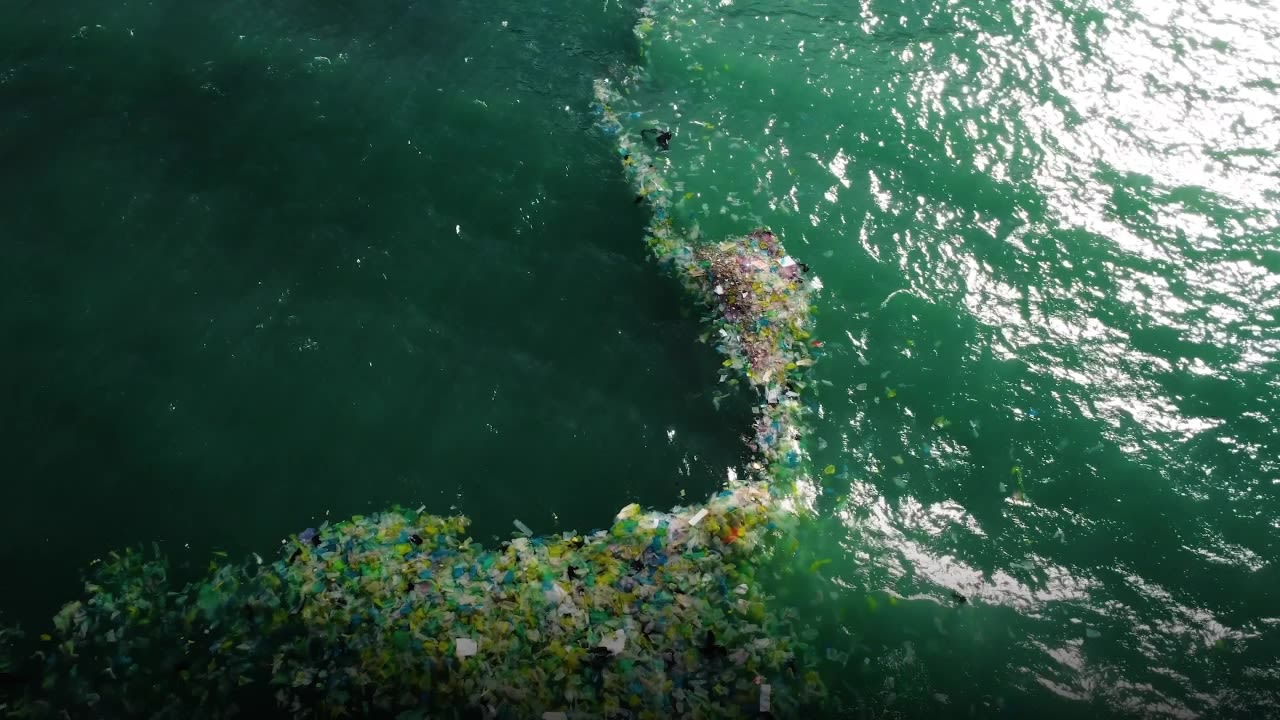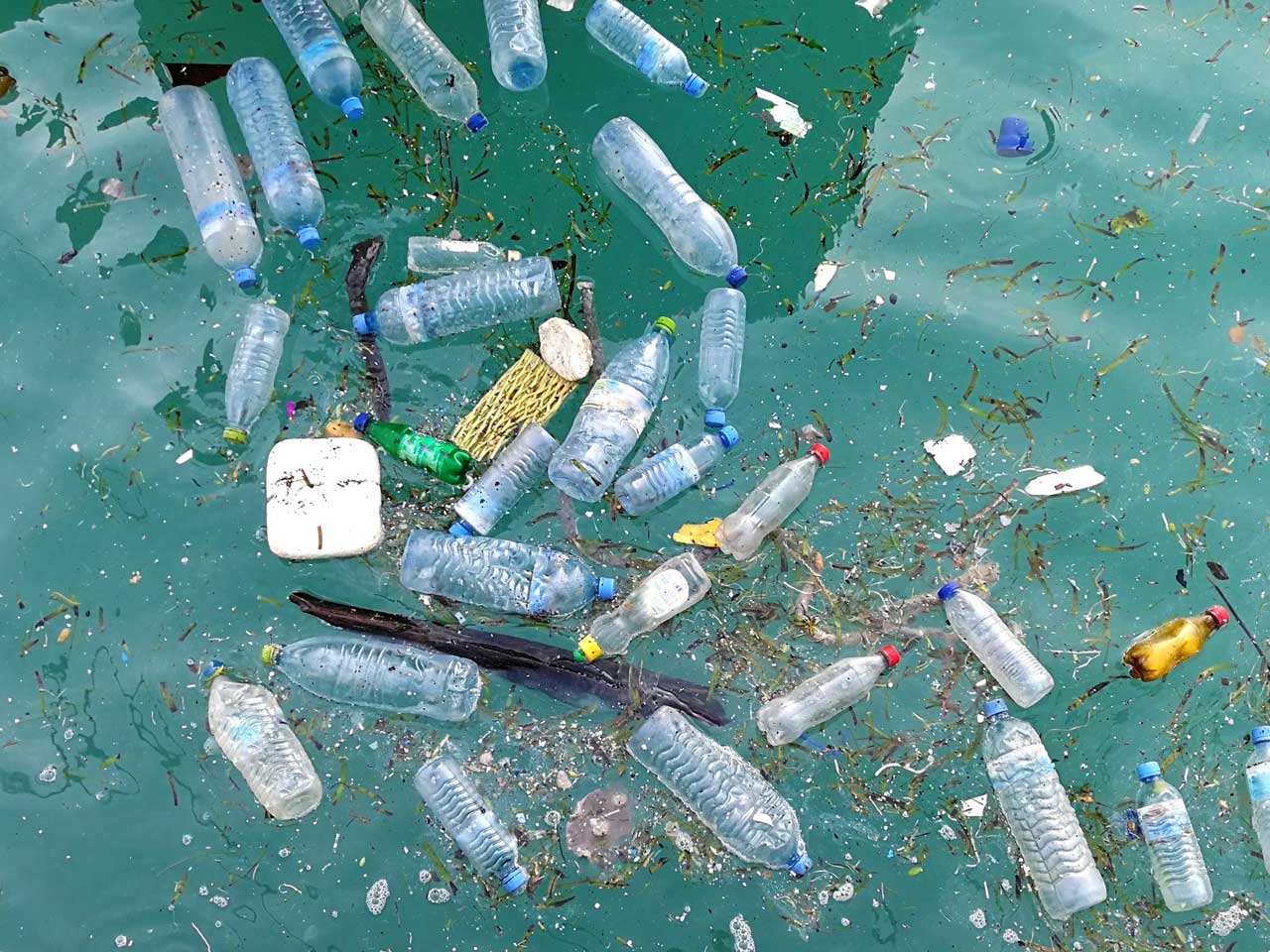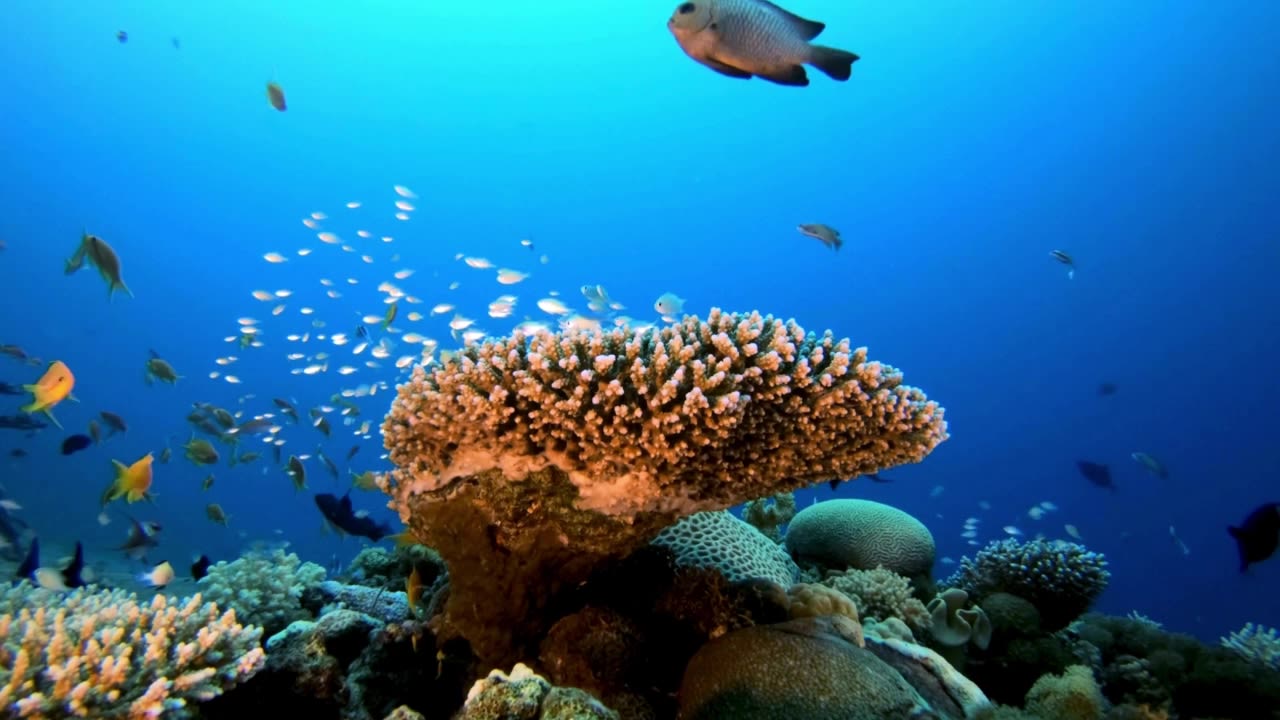Trash to Cash
Financial Solutions to the Marine Plastics Crisis in East Asia and the Pacific
By Alec Macfarlane

The Chao Phraya river, Thailand’s largest, flows almost 400 kilometers from the mountains in the north of the country, through its fertile central plain and the capital Bangkok, before emptying into the Gulf of Thailand in the south. Flanked by farms and villages, its surrounding land is used for rice farming and fruit orchards, and its canals are lined with settlements that are home to thousands of people. But it is also one of the world’s most polluted rivers, transporting around four million kilograms of riverine plastic each year, which chokes its canals and negatively impacts the ecology of the river and the communities that depend on it. The river is one of the main sources of marine-plastic waste in Thailand, which suffers from one of the world’s biggest plastic waste crises and loses up to $4 billion annually from plastics being discarded as opposed to recycled into other valuable materials.
“Thailand has a very high quantity of plastic waste, but we are only able to recycle around a quarter of it,” said Kulanart Siriphati. “What’s left just goes to waste.”
Ms. Siriphati is the Managing Director of Bangkok-based Union J Plus, a women-owned and led company that collects and recycles large volumes of domestic plastic waste in Thailand and converts it primarily into premium, food-grade polyolefin plastic. The company recently announced a new investment from Singapore-based Circulate Capital, a private-equity firm and IFC client dedicated to fighting plastic pollution and advancing the circular economy—where materials and products are kept circulating as long as possible—in South and Southeast Asia. The investment will enable Union J Plus to recycle 30,000 tons of plastic a year, including 20,000 tons of premium, food-grade polyolefins.
Circulate Capital is backed by global brands including Coca-Cola, Danone, and Procter & Gamble, a roster of blue-chip multinationals that its investee companies can tap for valuable technical expertise. The firm is also helping to fill a huge global financing gap. An estimated $175 billion a year is needed to achieve U.N. Sustainable Development Goal (SDG) 14, to conserve and sustainably use the oceans, seas, and marine resources for sustainable development, by 2030. Of the 17 SDGs, this goal is the least funded.
“There is not enough funding and capital flows going toward addressing the issue of marine plastics,” said Pushkala Ratan, Asia Climate Finance Lead, Financial Institutions Group, IFC. “It’s often an ignored topic within climate finance that needs attention urgently.”
“The public sector and banks have not supported us in our business because what we do may not look valuable,” added Ms. Siriphati. “When we want to expand and add some new technologies, sources of investment funds are really hard to find. Circulate Capital can support us with new technology and innovations, and we have the same objective with the environment, so we decided to work together.”
Circulate Capital is just one example of a company whose targeted sector focus is helping to address the plastics crisis in East Asia and the Pacific. Banks and corporates in Southeast Asia, where cleanup costs for rivers alone are estimated at almost $300 billion, are starting to issue blue bonds and loans to tackle the issue. These are innovative financing instruments that raise and earmark funds for investments such as water and wastewater management, reducing ocean plastic pollution, marine ecosystem restoration, sustainable shipping, eco-friendly tourism, and offshore renewable energy.

Kulanart Siriphati and the Union J Plus team at their plastics recycling facility. Photo courtesy: Union J Plus
Kulanart Siriphati and the Union J Plus team at their plastics recycling facility. Photo courtesy: Union J Plus

The Chao Phraya river in Thailand, one of the main sources of marine-plastic waste in the country. Photo: Shutterstock
The Chao Phraya river in Thailand, one of the main sources of marine-plastic waste in the country. Photo: Shutterstock

Pushkala Ratan, Asia Climate Finance Lead, Financial Institutions Group, IFC. Photo: IFC
Pushkala Ratan, Asia Climate Finance Lead, Financial Institutions Group, IFC. Photo: IFC
BDO Unibank, the largest bank in the Philippines, recently issued a $100 million blue bond with support from IFC to finance projects that help prevent marine pollution and preserve clean water resources.
“Blue bonds are close to our hearts because we are a country of 7,641 islands,” said Federico Tancongco, Senior Vice President and Chief Compliance Officer at BDO Unibank. “We are surrounded by water, and yet we have islands that import their water from other islands, because many source their water not from the sea, but from rainfall, and rainfall distribution is very uneven. Right now, demand for water is growing faster than the supply, and there’s a scarcity of it, especially in Metro Manila.
“The ocean is also critically important to us. We are regarded globally as a center of biodiversity, rich in coral reefs, mangroves, beach forests, and marine wildlife. But the Philippines is also the plastic sachet capital of the world. When we sell things, they are typically not sold in plastic bottles, but sachets, from coffee and cooking oil to shampoo. The waste from this is a great threat to our marine ecosystem."
Blue bonds are already drawing the attention of some of the world’s biggest institutional investors. T. Rowe Price and IFC recently announced plans to create a pioneering global blue bond capability that plans to raise over $500 million in international capital from institutional investors to invest in blue bonds issued by financial institutions and real sector companies in emerging markets, including those in Asia.
“Investors should be interested in blue finance, not just from an SDGs’ perspective, but also from a commercial returns perspective,” said Tongai Kunorubwe, head of environmental, social, and governance in the Fixed Income Division at T. Rowe Price. “The opportunity is material. If put alongside the economies of the world, the blue economy would be the seventh largest globally. We're talking about a $3 trillion contribution annually in 2030, putting it somewhere between Japan and Italy in terms of size today.
“There is a significant opportunity at play here that should not be lost on the investment community.”
Other financial innovations are also appearing in the blue space. Some companies are issuing sustainability-linked debt with blue performance targets. Blue-carbon offset projects are emerging, too.
“There are several innovations in finance that are becoming available to tackle the marine-plastic waste issue, and IFC has been at the forefront of a number of them,” said Ms. Ratan. “For instance, our blue finance program, the release of the Blue Finance Guidelines, and also several direct investments with financial institutions and corporates that are helping to address this issue, all with financial access and inclusion at the heart of it.”
Plastic production plays its own role in the climate crisis, too. Almost every piece of plastic is made from a fossil fuel, and greenhouse gases are emitted at every stage of their lifecycle, from extraction to disposal. Production alone accounts for roughly 6 percent of global oil consumption, equivalent to the oil consumed by the global aviation sector. If the use of plastics continues as expected, the sector will account for 20 percent of oil consumption and 15 percent of the global annual carbon budget by 2050.
The climate impacts of recycling are also significant. In Thailand, for example, recycling 1,000 metric tons of mismanaged plastic can lead to a reduction of nearly 1,400 tons of CO2-equivalent atmospheric emissions, 22 million megajoules of reduced energy usage, and approximately 9,000 cubic meters of water savings.

Marine plastic pollution is a threat to our oceans, water resources, and the livelihoods of millions who depend on them. Photo: Shutterstock
Marine plastic pollution is a threat to our oceans, water resources, and the livelihoods of millions who depend on them. Photo: Shutterstock
“Plastic pollution contributes around two gigatons of CO2 emissions every year,” said Ellen Martin, Chief Impact Officer at Circulate Capital. “If we were to invest in infrastructure, we could flip that narrative and have circular solutions turn every ton of plastic pollution into three tons of carbon savings.”
But scaling markets for blue finance will require significant work by both the public and private sectors. Banks must be educated to develop bankable and sizable blue assets for investment, and fully supported in the creation of new environmental and social risk-management mechanisms for blue sectors.
Regulators must also introduce more policies to help unlock blue investment opportunities. This includes redesigning recycling standards for packaging and setting mandatory recycled content standards. Central governments must also create an enabling environment for cities to borrow responsibly, allowing them to better manage their plastic waste. Innovation in the private sector will also play a role in attracting more investment, such as the creation of bottles made from plant materials.
Rivers and oceans are critical for lives and livelihoods in East Asia and the Pacific and are a cornerstone of many economies in the region, whose private sector has a vital role to play in preserving and increasing clean water resources, restoring biodiversity, and regenerating ocean health.
Our oceans, and our climate, are counting on it.
